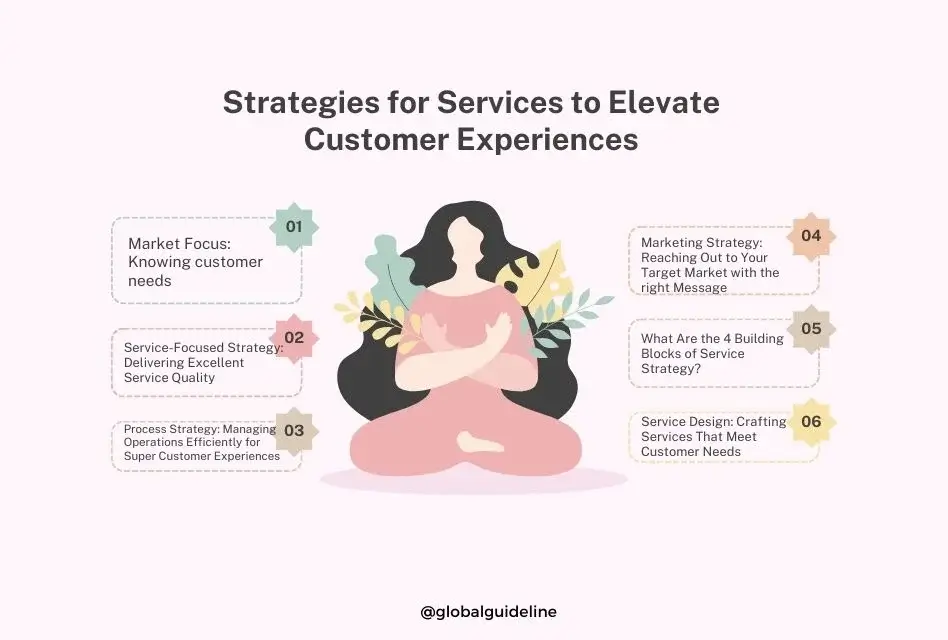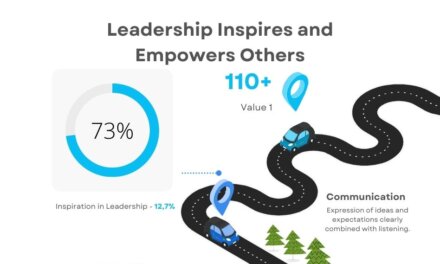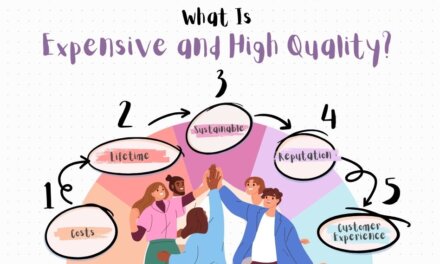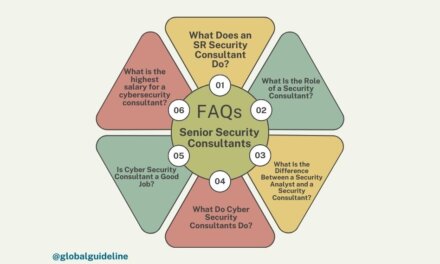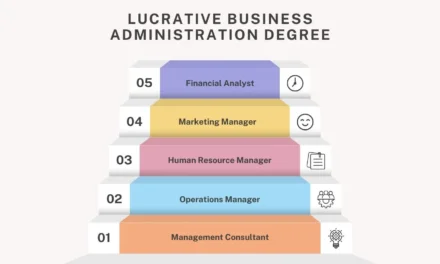A highly competitive marketplace for services makes it the focal point for customer experience, which differentiates companies. Many times, it is only through the experiences that customers have with your brand that they will remain loyal or go elsewhere. In this article, the top 4 strategies for services will be discussed so businesses can succeed in a crowded marketplace.
Table of Contents
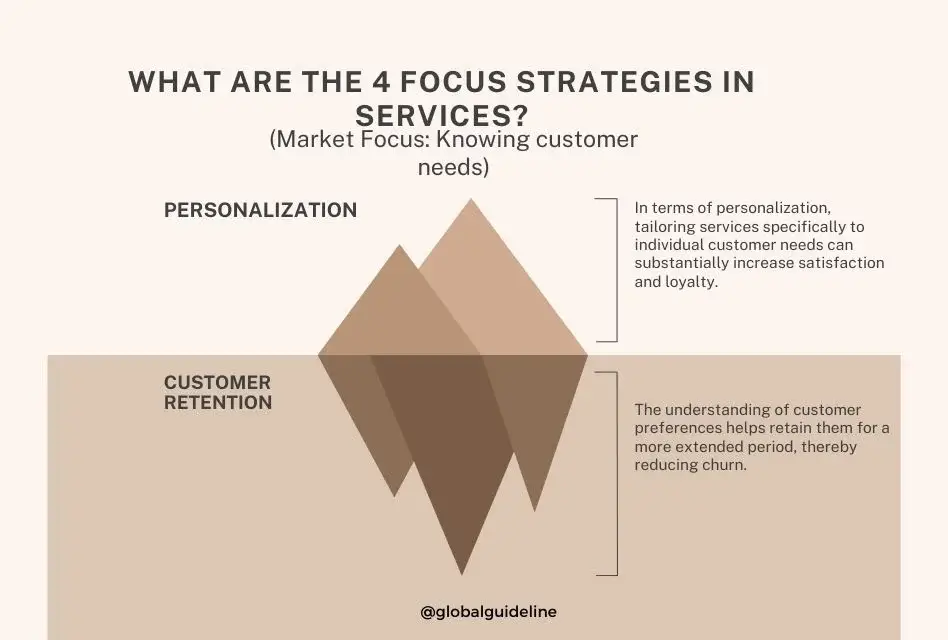
What Are the 4 Focus Strategies in Services?
Any business that wants to shift its customer services into being better should start by understanding the four focus strategies in services. They include market focus, focusing on service strategy, useful process management, and improving marketing strategies.
1. Market Focus: Knowing customer needs
A market-focused strategy demands an in-depth understanding of the type of needs, wants, and what the target audience cares about. This enables you to be better aligned with what customers want so you can better meet their needs, desires, and wants.
Reason Why It Matters:
- Personalization: In terms of personalization, tailoring services specifically to individual customer needs can substantially increase satisfaction and loyalty.
- Customer Retention: The understanding of customer preferences helps retain them for a more extended period, thereby reducing churn.
- Competitive Advantage: Effective market focus allows a company to concentrate its services on what the customer actually and deeply wants or needs ahead of the competition.
Implementation of Market Focus
- Conduct regular market research by doing surveys, holding focus groups, and analyzing data to update themselves on the customer necessities.
- Customer base can be segmented basis of similar requirements and rendered services as per their needs.
- Create customer feedback loops to enable continuous feedback in respect of customer experience. Based on the same, this experience may or may not be improved with time.
2. Service-Focused Strategy: Delivering Excellent Service Quality
A service-focused strategy is defined as delivering a quality that meets expectations time and again. A service excellence strategy is, therefore, a core business value.
Why is it Important?
- Customer Satisfaction: Good services mean a happy customer who is likely to come back and tell others about the good work your services or organization is doing.
- Brand Reputation: Highly focused service tends to give your brand the much-needed reputation in quality and reliability.
- Customer Loyalty: A high service level instills loyalty as one-time customers become repeat clients.
How to Implement a Service-Centric Strategy:
- Train Your Team: Start by giving extensive training programs so that every employee is certified to deliver good customer services.
- Set Service Standards: Clearly define the service standards and implement them in all those interactions with customers.
- Measure Service Quality: Monitor the quality of service that is provided and measure performance based on customer opinion and other parameters.
3. Process Strategy: Managing Operations Efficiently for Super Customer Experiences
Overview: The process strategy is the improvement of all service delivery processes to ensure efficiency, consistency, and high quality in the delivery. You will optimize your operative processes for the better overall experience of the customer.
Importance:
- Efficiency: Optimized processes reduce wait times, thereby enhancing the efficiency in the speed for customers to receive services-boosting satisfaction.
- Consistency: Well-defined procedures assure that every customer is given the same level of service, regardless of who the customer interfaces with.
- Cost Management: Efficient processes allow one to reduce operational costs, which can, in turn, be passed along to customers in the form of savings.
How to Implement a Process Strategy:
- Describe Service Processes: Identify and document all steps undertaken in providing your services to identify where improvements can be made.
- Automation wherever possible: Implement automation tools that can automate repetitive tasks and free human employees to be used for much more complex customer interfaces.
- Continuous Improvement: Always review and refine business processes to remove inefficiencies and adapt to evolving customer needs.
4. Marketing Strategy: Reaching Out to Your Target Market with the right Message
Brief Overview: A good marketing strategy will move your message to the right target audience in communicating value to your services. Included in this strategy is the use of marketing channels in attracting and engaging customers.
Why is it important for you?
- Brand Awareness: With a solid marketing strategy, there is greater brand visibility to be accessed and reached and as such chosen by others.
- Customer Engagement: Effective marketing will keep your customers informed and interested in your products.
- Sales Growth: A well-focused marketing plan will push more qualified leads up the sales pipeline, which will increase sales and revenue.
How to Put Together a Marketing Plan:
- Key Marketing Channels Identification: Identify where your desired marketplace spends its time and focus marketing efforts to those channels (e.g. social media, e-mail marketing, SEO).
- Create a message-be it through copy or images that resonates with your target market, bringing out the pain points, emphasizing the value proposition of your services, and encouraging response.
- Monitor and Improve: All the while, track the performance of your marketing initiatives and adjust them as necessary for better performance.
What Are the 4 Building Blocks of Service Strategy?
The understanding of the four pieces of service strategy would often be critical to any service-focused organization. Its four pieces include: designing services, delivering services, managing services, and supporting customers. When these components are aligned, you can make sure that services are more cohesive and effective for more pleasant customer experiences.
1. Service Design: Crafting Services That Meet Customer Needs
Service design refers to coming up with services that generate just what your customers desire. It simply involves designing things that are not only useful but fun to use.
Key Elements:
- User Research: Conduct in-depth research on the customer requirements.
- Prototyping: Create prototypes that are tested and redesigned service propositions before full-scale rollouts.
- Customer Journey Mapping: Create a visual map of the customer journey, which helps bring out points of connection and keeps the overall experience seamless.
2. Service Delivery: Provides Effective and Consistent Service
Service delivery refers to how your services are delivered to customers. It is a way of ensuring that every interaction is smooth, efficient, and consistent across channels.
Key Elements:
- Standard Operating Procedures (SOPs): SOPs should be developed. The developing of SOPs ensures consistency in service delivery.
- Technology Integration: Technology integration should be employed. Technology can be used to streamline and make the service delivery smoother and friendlier to the customer
- Training and Development: Staff training and development is also key. The employees must be continually trained so as to maintain good service standards.
3. Service Management: Managing and Improving Service Operations
Service management is managing the day-to-day activities of your services with continuous improvement to improve efficiency and customer satisfaction.
Major Concepts:
- Performance Monitoring: Monitor for KPIs to measure service quality.
- Continuous Improvement: Continuously review and upgrade service operations to cover inefficiencies in improving the services for changing customer needs.
- Customer Feedback: Monitor customer opinions to provide available areas for improvement.
4. Customer Service: Provide Support Where Needed
Customer service is the epitome of a service strategy that provides support to the customer wherever needed. It’s all about solving problems efficiently and quickly, so the satisfaction of the customer isn’t compromised.
Key Components:
- Multichannel Support: Support delivered through different channels-telephone, email, chat, and social media.
- Knowledge Base: Developing a robust knowledge base so that the customers can come to know the answers themselves.
- Support Team Training: Train your support team properly so that they are equipped in turn to educate the customers about what should be done and how their problems and issues can be addressed.
What Are the 4 Key Business Strategies?
The four key business strategies for service-focused organizations include market penetration, product development, market development, and diversification. These strategies help businesses expand their market reach, introduce new services, and drive growth.
1. Market Penetration: Increase in Market Share
Market penetration involves increasing your share of the current market by attracting more customers to your existing services.
How to Implement:
- Competitive Pricing: Offer competitive pricing to attract price-sensitive customers.
- Promotions: Offer promotional offers and discount schemes to acquire a new customer to your services.
- Customer Loyalty Programs: Incentives for retaining the existing customers. Repeat business earns a lot of revenue.
2. Product Development: Introducing New Services
Product development focuses on developing a new service or improving an already existent one to fulfill the emerging needs of your customer.
How to Implement:
- Innovation: Invest in research and development to innovate new services.
- Customer Feedback: You apply customer feedback to identify gaps in the services you currently offer and develop services that address such needs.
- Pilot Programs: You apply pilot programs to test new service delivery modes before going full scale.
3. Market Development: Reaching New Markets
Market development simply refers to the expansion of your services into new markets, either geographic or demographic.
How to Apply it:
- Market Research: Use research to indentify new targetable markets.
- Localization: Adapt your services to fulfill the cultural and legal requirements of foreign markets.
- Partnerships: Form strategic partnerships with local businesses to have a platform in new markets.
4. Diversification: Diversification of Service Offerings
Diversification involves the diversification of services offered, thereby diversifying operations to enhance access into other sources of income.
How to Do It:
- Related Diversification: Develop services that complement your existing services.
- Irrelevant Diversification: Join a completely different line of services in which you can acquire new sources of income.
- Cross-Selling: Sell them new services using the customers you have.
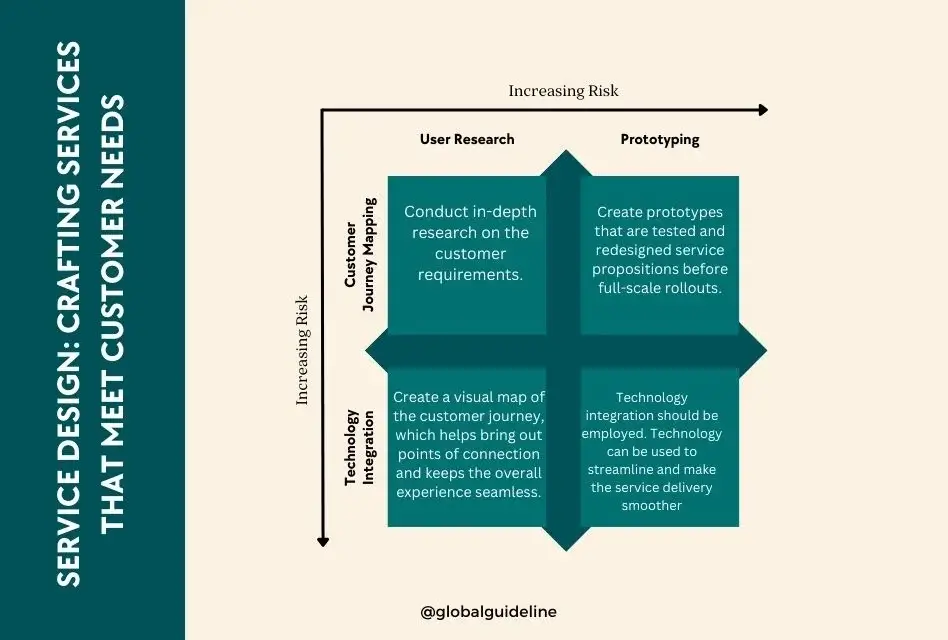
What are the 4 Management Strategies?
Effective management strategies see to it that your service-oriented organization runs efficiently and delivers good customer experiences. The four management strategies are planning, organizing, leading, and controlling.
1. Planning: Setting Objectives and Strategies
Planning refers to creating clear objectives and developing strategies to meet the set objectives. It is concerning an alignment of your organizational goals to customer needs and hence to market opportunities.
Key Elements:
- Strategic Planning: Formulates long-term strategies that define the course for the organization.
- Operational Planning: Defining short-term plans that prescribe how to achieve day-to-day goals.
- Contingency Planning: Preparing for risk through formulating contingency plans.
2. Organizing: Structuring Resources and Teams
Organizing: structuring your organization’s resources, which may include its people, processes, and technology, to achieve the given objectives.
Key Elements:
- Resource Allocation: The efficient use of resources to ensure all the parts of the organization are provided for.
- Team Design: Form teams around skills, thus really maximizing the delivery of service.
- Technology Utilization: Ensure technology is exploited to increase efficiency as well as effective communication.
3. Leading: Coaching and Motivating Teams
Leading encompasses guiding and motivating your teams toward the accomplishment of organizational performance. It is about developing a healthier work environment which encourages healthy performance.
Key Elements:
- Leadership Development: Investing in leadership development programs allows equipping managers with needed skills to lead teams effectively.
- Employee Engagement: Engage the employees in the decision-making process and reward them for their efforts to encourage an engaging culture.
- Communication: Open lines of communication create an environment of coordination and orientation toward the organization’s objectives.
4. Controlling: Monitoring and Improving Performance
Controlling involves performance monitoring and taking corrective action to keep the organization on the proper path toward attaining its objectives.
Critical Elements:
- Performance Measures: Key performance indicators (KPIs) are used to monitor the performance of the organization.
- The feedback loops present avenues for the improvements of areas both from customers and employees.
- Continuous Improvement: Continuous improvement initiatives revolve around improving the quality and efficiency of the service.
FAQ
1. What are the 4 focus strategies in services?
The four focus strategies for services include market focus, service-focused strategy, process strategy, and marketing strategy.
2. What are the 4 pieces of service strategy?
The four pieces of service strategy include service design, service delivery, service management, and customer support.
3. What are the 4 key business strategies?
The four key business strategies are market penetration, product development, market development, and diversification.
4. What are the four management strategies?
The four management strategies are planning, organizing, leading, and controlling.
5. What are the four characteristics of services?
There are four service characteristics: intangibility, perishability, variability, and inseparability.
6. What are the four business success strategies?
The four strategies are focusing on market needs, delivery of excellent service quality, optimizing operational processes, and effective marketing .
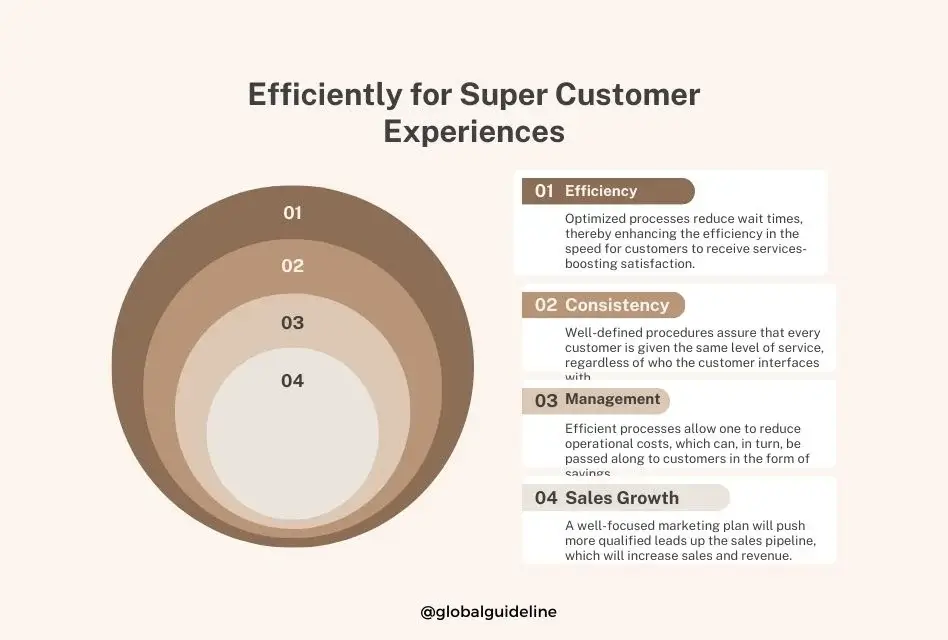
Conclusion
By inculcating such top 4 service strategies, a business may raise the customer experience interview level dramatically, thus leading to growth in customer satisfaction and loyalty. Whether the procedure requires further fine-tuning of market focus, improvement in the quality of service rendered, improvement of processes, or boom in marketing campaigns, these strategies give an all-inclusive framework to thrive within the services market.
Therefore, one must continuously reconfigure and calibrate the strategies for a company interested in remaining competitive to enable emergence into new needs of customers and the market. In this respect, you would always remain ahead of your competitors in ensuring that your business is number one in delivering the best customer experience.
Related Topic:
Why 3 Out of 4 Investment Banking Interview Outfits Fail?
What Are the 5 Hidden Things That Sabotage Vision and How to Overcome Them?
Basic Difference Between Account Executive and Mid Market Account Executive

